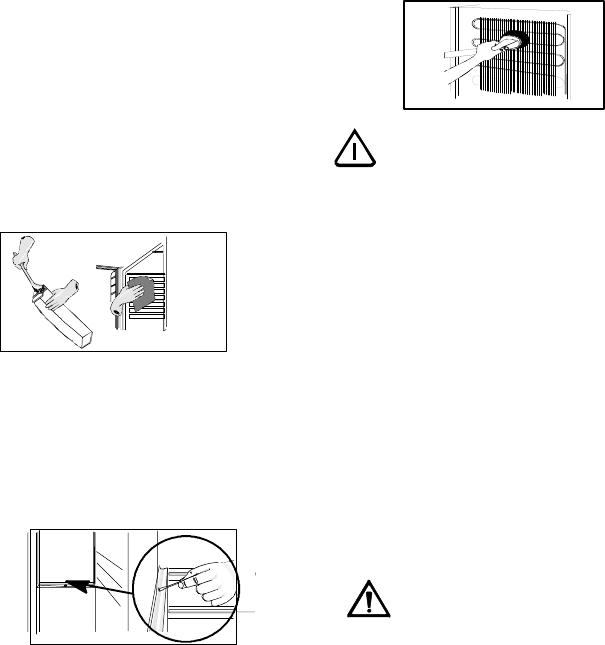
15
MAINTENANCE and
CLEANING
Avoid opening the refrigerator door
during defrosting, as the cooling is off.
If the freezer is turned off, the
refriger
ator will also turn off.
Cleaning
Clean the cabinet at regular intervals.
Disconnect the appliance from
electricity supply.
Internal Cleaning
Clean the inside and accessories with
warm water and bicarbonate of soda
(5ml to 0,5 litre water) Rinse and dry
thoroughly.
Regularly check the door seals and
wipe clean to ensure they are clean
and free from debris.
Clean out the drip channel inside the
fridge at regular intervals and ensure
that the drip channel is clear at all
times. If blocked carefully clear using
a piece of flexible curtain wire inserted
into the drain outlet to remove the
blockage.
External Cleaning
Use water/neutral soap emulsion for
cleaning the surface of stainless steel,
anti-finger-print coated. Do NOT use
abrasive paste.
Wash the outer cabinet with warm
soapy water. Vacuum-clean under the
cabinet. Once or twice a year dust the
condenser (black grille) and the
compressor at the back of the
appliance, with a brush or vacuum
cleaner, as an accumulation of dust
will affect the performance of the
appliance and cause excessive
electricity consumption.
When moving the cabinet, lift it by the
front edge to avoid scratching the floor.
Defrosting the fridge
The fridge is defrosted automatically
every time the compressor stops. Frost
formation can be prevented by:
· not putting warm foodstuff inside
the cabinet.
· avoiding frequently opening the
door or keeping it open too long.
Defrosting the freezer
Defrosting is not necessary.
Every 24 hours, the evaporator is
defrosted automatically.
Never use a hair drier or other heating
appliances to speed up defrosting.
Excessive heat may damage the
plastic interior, and humidity could
enter the electric appliance making it
live.


















